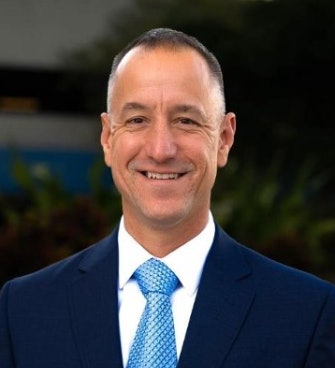Trucking news and briefs for Friday, Jan. 26, 2024:
Former Roehl president Ingersoll joins RoadOne
 Don Ingersoll
Don Ingersoll
Ingersoll joins RoadOne with extensive transportation and logistics knowledge and leadership experience at some of the largest companies in North America.
Prior to joining RoadOne, he served as President of Roehl Transport (No. 62), where he led the Truckload, Refrigerated and Dedicated divisions. At XPO Logistics (No. 8), he held the role of Vice President of Transportation overseeing operations of the intermodal and drayage business units in North America. He also spent 14 years with J.B. Hunt Transport in a variety of leadership positions in the Dedicated and Intermodal businesses.
In recent years, RoadOne has broadened its national footprint with over 14 acquisitions and continues to reinforce its position as a single source logistics and distribution services company. Ingersoll will manage alongside RoadOne founders Ken Kellaway and David McLaughlin.
RoadOne offers a number of services, including drayage, fleet operations, transloading, depot and yard management, warehousing/DC and fulfillment services.
C.H. Robinson expands eBOL service in LTL
Third-party logistics provider C.H. Robinson has now implemented an electronic bill of lading (eBOL) with 10 of the top LTL carriers in the nation and is in the process of doing so with four more, the company announced recently.
Standards for the eBOL were developed by the NMFTA’s Digital LTL Council, creating greater efficiency and real-time visibility for LTL shippers.
In the past year, 17,240 C.H. Robinson customers benefited from the eBOL and even more will in 2024 as C.H. Robinson helps additional LTL carriers come on board, the company said.
“While there are fewer carriers in the LTL universe and the top 25 handle over 90% of the market, the complexity of moving LTL freight means that digitization in this part of the logistics industry has been more challenging than truckload,” said Greg West, Vice President for LTL at C.H. Robinson. “With truckload freight, there’s generally one origin and one destination and a customer has exclusive use of the trailer. With LTL, you can have up to 30 customers’ freight on a trailer, with 30 destinations and 30 sets of paperwork. That makes it so valuable to have a common eBOL everyone can use.”
[Related: Why the entire trucking industry needs a common standard for electronic bills of lading]
Traditionally in LTL, a carrier would generate a tracking number for each shipper’s freight and print out stickers with those numbers. The driver would take the stickers to a shipper’s loading dock, affix them to a paper bill of lading and to each pallet – then do it all over at the next pickup. The tracking numbers from all the bills of lading would then be manually entered into the carrier’s computer system and sent to the logistics provider overnight or the next day.
Now, a tracking number is generated within seconds of the shipment being tendered to the carrier via API, and a complete bill of lading is ready for the shipper when the driver arrives. The driver just has to scan it.
All the manual work is eliminated, which lowers administrative costs, cuts down on errors and increases efficiency at every shipper’s dock. And with a tracking number known in advance, shippers can gain real-time visibility – starting with status updates via C.H. Robinson’s Navisphere platform when their freight is picked up.
[Related: NMFTA plans development of LTL industry API roadmap]













